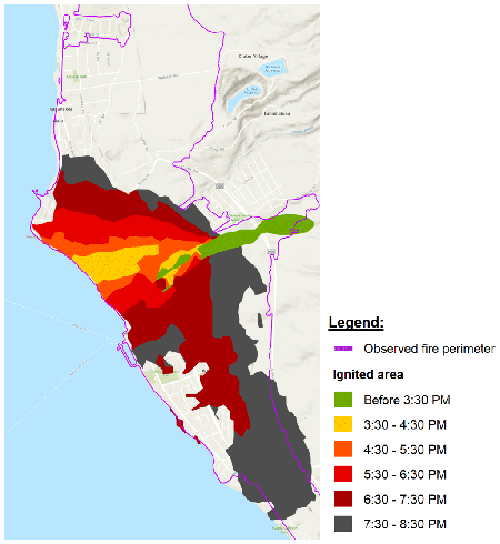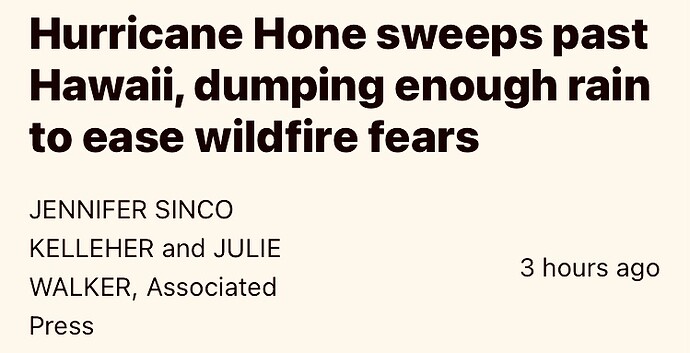To gain a detailed picture of the Lahaina Fire, the research team paired two computer models with different capabilities.
One, the NSF NCAR–based Weather Research and Forecasting (WRF) model, was used to simulate the downslope windstorm that erupted on the day of the fire, generating gusts up to 80 miles per hour. The high-resolution model could show the turbulent wind flows around Lahaina and a “hydraulic jump” — an event in which winds rushing downhill abruptly rise when they collide with winds flowing in the other direction, setting off chaotic and powerful motions of air.
The wind fields from the WRF simulation were fed into the second model, Streamlined Wildland-Urban Interface Fire Tracing (SWUIFT). This model can simulate the spread of flames in a developed area, capturing the ways that extreme heat and shooting embers can set structures ablaze.
Scientists focus on Lahaina Fire to improve prediction of wildland-urban fires | NCAR & UCAR News


